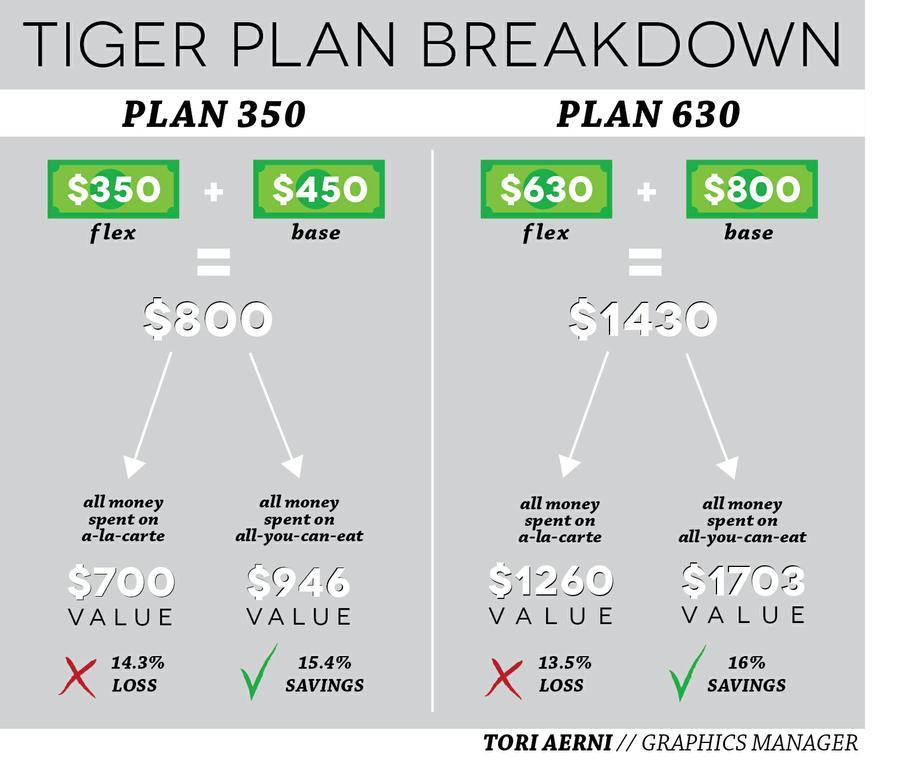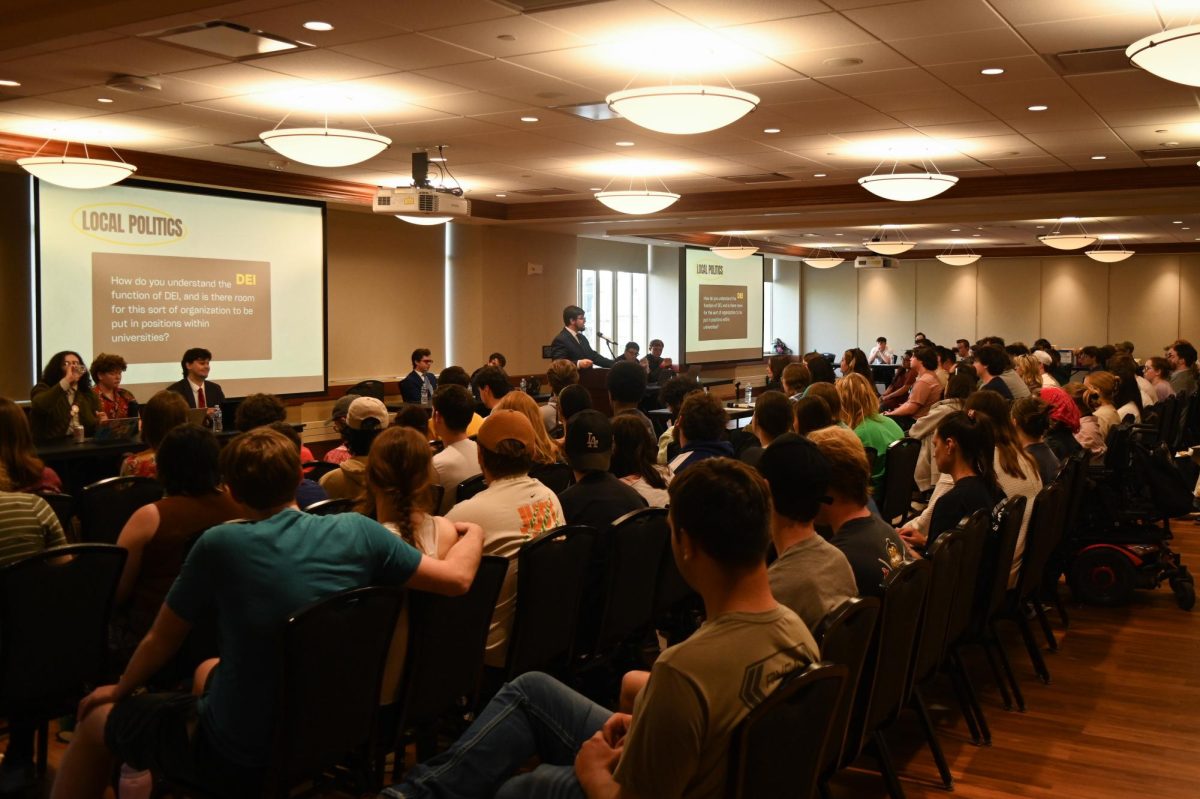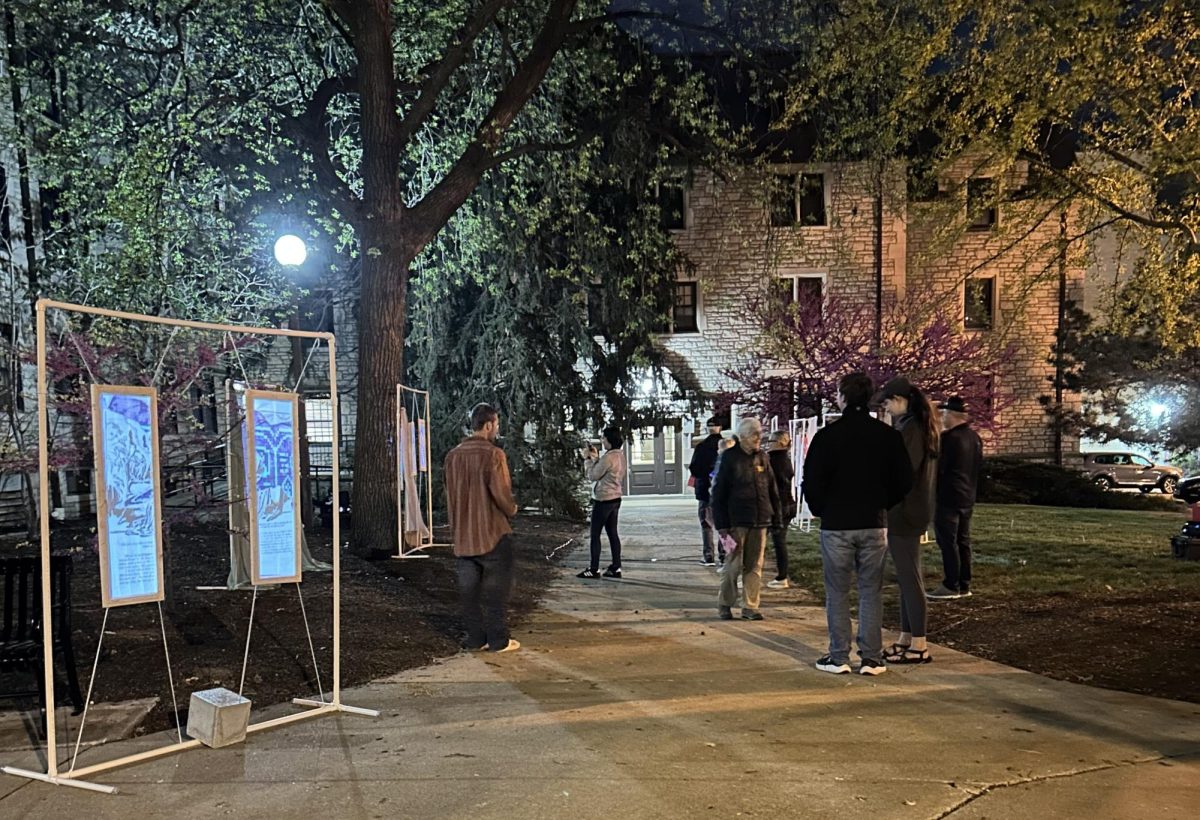Campus Dining Services rolled out its new Tiger Plan, advertised as “the most flexible off-campus student dining plan,” this semester after over five years of development, CDS Marketing Director Mike Wuest said.
The Tiger Plan allows students to shop at all 21 CDS locations, including restaurants in the Student Center and Memorial Union, Mizzou Market locations and all dining halls. The department’s website advertises that students will “save up to 63% off the cash price” at all locations.
The 63 percent off does not apply to the total cost of the plan, but instead applies to flex dollars purchased with the plan. The Tiger Plan’s price is divided into two parts: the base cost and flex dollars. The base cost goes directly to CDS to pay fixed expenses, such as mortgages and staff salaries. The remaining money becomes flex dollars and goes into a flex account, similar in structure to E.Z. Charge. The flex dollars are what students use to actually purchase meals or a-la-carte products at the discounted rate.
Students can save money on The Tiger Plan, but they can never save 63 percent of their cost when factoring in the base cost. If a student buys the 350 plan for $800, for example, and only dines at all-you-can-eat locations, they receive $946 worth of food, or a 15.4 percent discount compared to the cash price. But if the student only dines at a-la-carte locations, they receive $700 worth of food, which is 14.4 percent more expensive than paying in cash.
Students receive a 63 percent discount on flex dollars at all-you-can-eat locations, 50 percent at a-la-carte locations and 20 percent at Mizzou Markets. Wuest said the differences in discounts are due to the varying costs of food at different locations.
When calculated with the base cost, each flex dollar actually costs $2.29 or $2.26, depending on which plan a student purchases. Plan 350 costs a total of $800, with a base cost of $450 and $350 in flex dollars. Plan 630 costs $1430, with a base cost of $800 and $630 in flex dollars.
“We wanted to be as transparent as possible about where the dollars in The Tiger Plan were going,” Wuest said in an email. “All dining plans at all universities have these [fixed costs] built into their program, but many times you won’t know that without asking specific questions.”
The [CDS website](http://dining.missouri.edu/the-tiger-plan/) offers students a glimpse of how prices at different dining locations look when using the Tiger Plan. The chart on the website advertises that a Double Shack Burger from Mort’s costs $4.19 without a meal plan and $2.10 in flex dollars. However, the chart does not factor in the base cost. A student using the Tiger Plan 350 pays $2.29 for each flex dollar, so that burger actually costs them $4.81.
Junior Ahmad Kayyali said he began the year on the Tiger Plan but switched to a block meal plan after he calculated that it was possible to lose money by using it.
“I was really disappointed with The Tiger Plan this year,” he said. “If you actually calculate it, you’re paying more for food.”
Wuest said CDS consulted leaders of the Residence Halls Association, the Missouri Students Association and CDS’ [secret shoppers](http://dining.missouri.edu/secretshop/), students who are selected to shop at dining locations as regular students and then evaluate the location. He said the feedback was “overall very positive.” MSA President Sean Earl and RHA President Matt Bourke both confirmed that they had discussed the plan with CDS leaders before its release.
Earl said the plan is a good opportunity for students living outside of residence halls, but he said he wishes the plan gave students more flex dollars.
“The only major concern that I had with the program was the fact that it only gave students $350 of flex spending after paying $800 for the plan,” Earl said in an email. “[CDS Director Julaine Kiehn] explained that the $450 is to cover the base cost of operations, which is understandable.”
A student can save money by adding additional funds to their flex account, but students are limited to adding $100 per semester. Flex dollars also do not roll over to the next semester the way E.Z. Charge does. Kiehn said in an email that was so the Tiger Plan works the same as the block dining plans to avoid confusion.
“The Tiger Plan can save students money, depending on where they use the plan,” Kiehn said. “There is value in the convenience and flexibility of being able to use the plan at any Campus Dining Services location. The student realizes the greatest value by using the plan in the all-you-care-to-eat dining locations.”
Wuest acknowledged that students would not receive as high a value if they shopped at a-la-carte locations and Mizzou Markets.
“We estimated that students would use it in a combination of places so that they would get at a minimum, the amount they paid for the plan in value,” Wuest said. “Most scenarios showed an increase in value.”
According to CDS’ website, the plan is currently in pilot stage and is targeted at “increasing the number of off-campus students on dining plans (and generating new revenue during these challenging financial times).” The website states that CDS will need to adjust the financial structure of the plan and make changes to the housing and dining contract before offering it to on campus students.
“Our students have been asking for a dining plan that offers the flexibility of use in all of our locations across campus, and we wanted to design a plan that worked with off-campus students,” Wuest said. “So we created The Tiger Plan with that in mind.”
_Edited by Claire Mitzel | cmitzel@themaneater.com_












